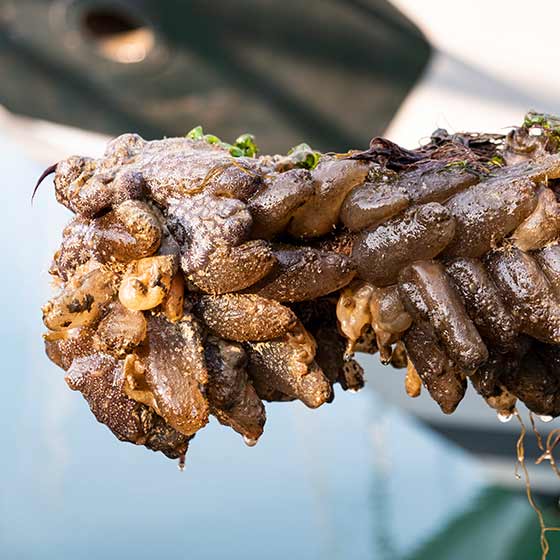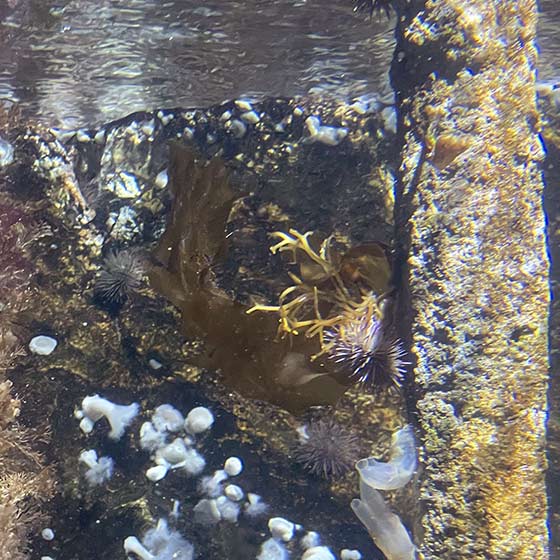The ascidian: a distant cousin of the fish!
Despite its appearance as a small transparent pouch, it is actually an animal that has intestines, a stomach and a heart, among other things! Its larva is a swimmer and even has a rough spine. It loses its backbone when it attaches itself to its body and takes the form of a bag with two openings. It is hard to believe when you look at it, but the ascidian shares a common ancestor with the vertebrates!
Attached to a support (rock, pontoon, boat hull…), it filters the water to feed on microscopic algae and endures the pollution of ports where there are up to 2000 individuals per square metre.
In the port of La Rochelle, two different species have been spotted by biologists: the colonial ascidian and the solitary ascidian. However, only the solitary ascidian continues to develop within the Aquarium. Each of these invertebrates measures between 5 and 10 centimetres.


